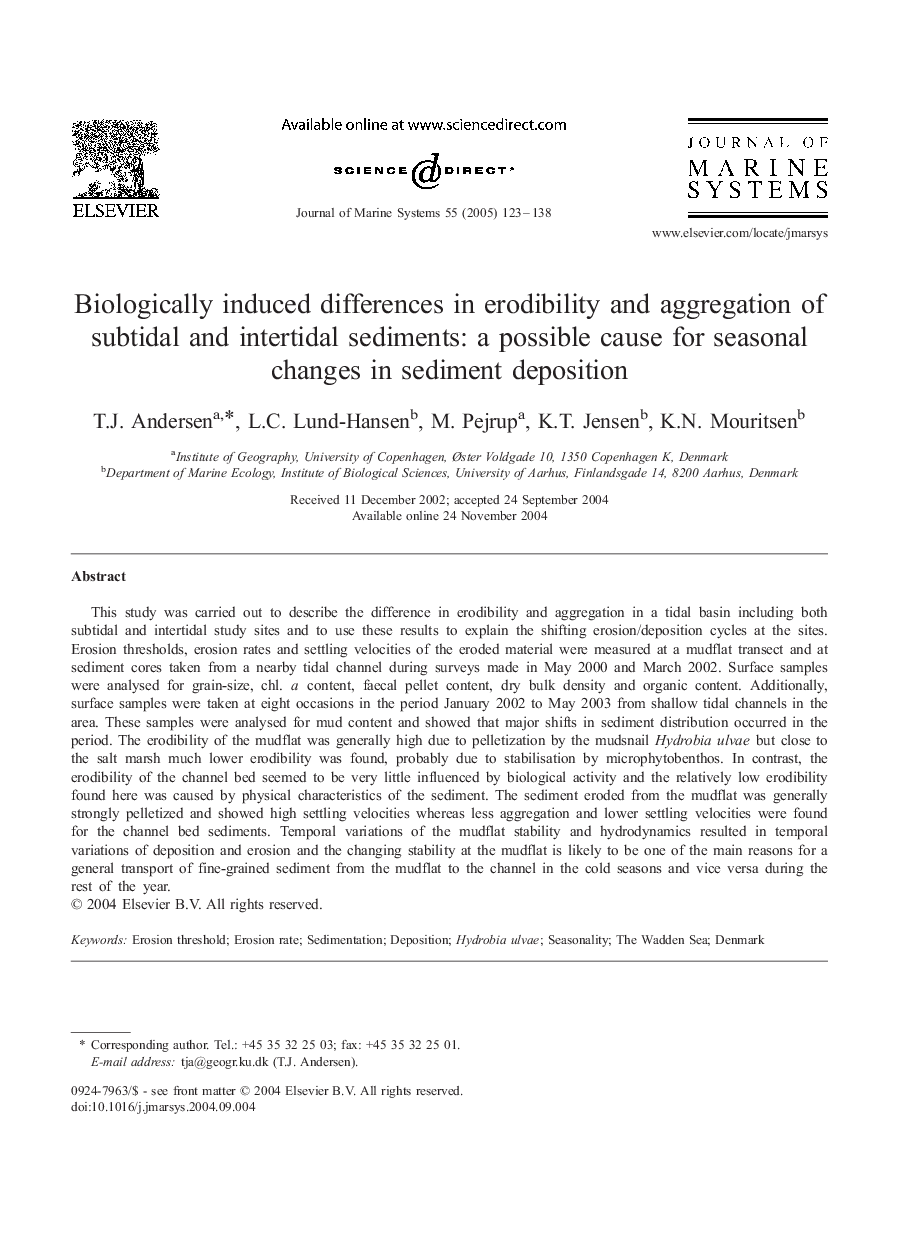| Article ID | Journal | Published Year | Pages | File Type |
|---|---|---|---|---|
| 9483485 | Journal of Marine Systems | 2005 | 16 Pages |
Abstract
This study was carried out to describe the difference in erodibility and aggregation in a tidal basin including both subtidal and intertidal study sites and to use these results to explain the shifting erosion/deposition cycles at the sites. Erosion thresholds, erosion rates and settling velocities of the eroded material were measured at a mudflat transect and at sediment cores taken from a nearby tidal channel during surveys made in May 2000 and March 2002. Surface samples were analysed for grain-size, chl. a content, faecal pellet content, dry bulk density and organic content. Additionally, surface samples were taken at eight occasions in the period January 2002 to May 2003 from shallow tidal channels in the area. These samples were analysed for mud content and showed that major shifts in sediment distribution occurred in the period. The erodibility of the mudflat was generally high due to pelletization by the mudsnail Hydrobia ulvae but close to the salt marsh much lower erodibility was found, probably due to stabilisation by microphytobenthos. In contrast, the erodibility of the channel bed seemed to be very little influenced by biological activity and the relatively low erodibility found here was caused by physical characteristics of the sediment. The sediment eroded from the mudflat was generally strongly pelletized and showed high settling velocities whereas less aggregation and lower settling velocities were found for the channel bed sediments. Temporal variations of the mudflat stability and hydrodynamics resulted in temporal variations of deposition and erosion and the changing stability at the mudflat is likely to be one of the main reasons for a general transport of fine-grained sediment from the mudflat to the channel in the cold seasons and vice versa during the rest of the year.
Related Topics
Physical Sciences and Engineering
Earth and Planetary Sciences
Oceanography
Authors
T.J. Andersen, L.C. Lund-Hansen, M. Pejrup, K.T. Jensen, K.N. Mouritsen,
